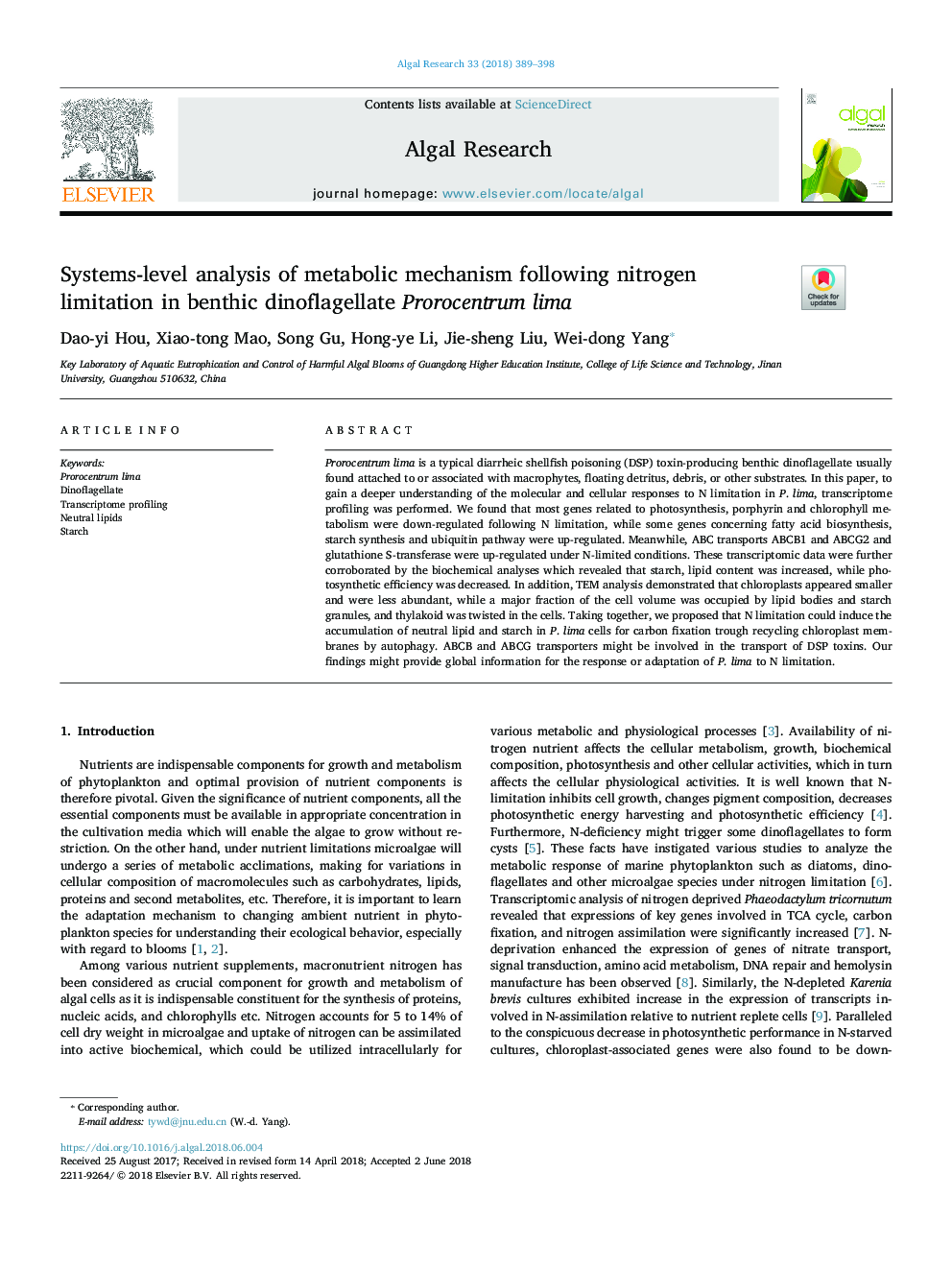| Article ID | Journal | Published Year | Pages | File Type |
|---|---|---|---|---|
| 8085809 | Algal Research | 2018 | 10 Pages |
Abstract
Prorocentrum lima is a typical diarrheic shellfish poisoning (DSP) toxin-producing benthic dinoflagellate usually found attached to or associated with macrophytes, floating detritus, debris, or other substrates. In this paper, to gain a deeper understanding of the molecular and cellular responses to N limitation in P. lima, transcriptome profiling was performed. We found that most genes related to photosynthesis, porphyrin and chlorophyll metabolism were down-regulated following N limitation, while some genes concerning fatty acid biosynthesis, starch synthesis and ubiquitin pathway were up-regulated. Meanwhile, ABC transports ABCB1 and ABCG2 and glutathione S-transferase were up-regulated under N-limited conditions. These transcriptomic data were further corroborated by the biochemical analyses which revealed that starch, lipid content was increased, while photosynthetic efficiency was decreased. In addition, TEM analysis demonstrated that chloroplasts appeared smaller and were less abundant, while a major fraction of the cell volume was occupied by lipid bodies and starch granules, and thylakoid was twisted in the cells. Taking together, we proposed that N limitation could induce the accumulation of neutral lipid and starch in P. lima cells for carbon fixation trough recycling chloroplast membranes by autophagy. ABCB and ABCG transporters might be involved in the transport of DSP toxins. Our findings might provide global information for the response or adaptation of P. lima to N limitation.
Related Topics
Physical Sciences and Engineering
Energy
Renewable Energy, Sustainability and the Environment
Authors
Dao-yi Hou, Xiao-tong Mao, Song Gu, Hong-ye Li, Jie-sheng Liu, Wei-dong Yang,
